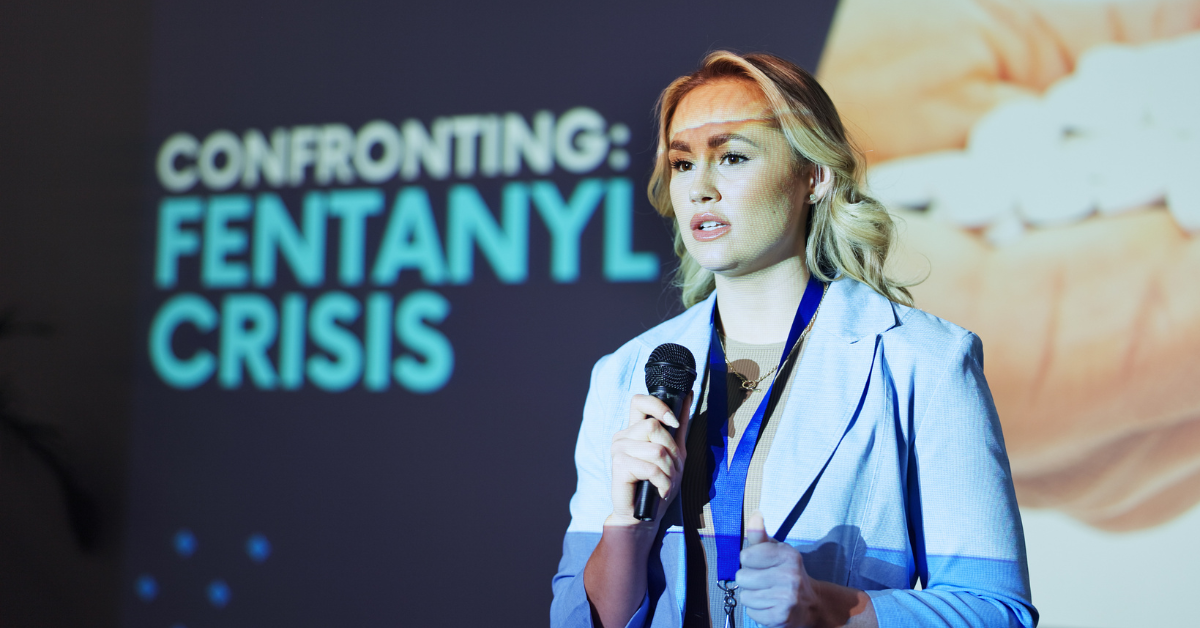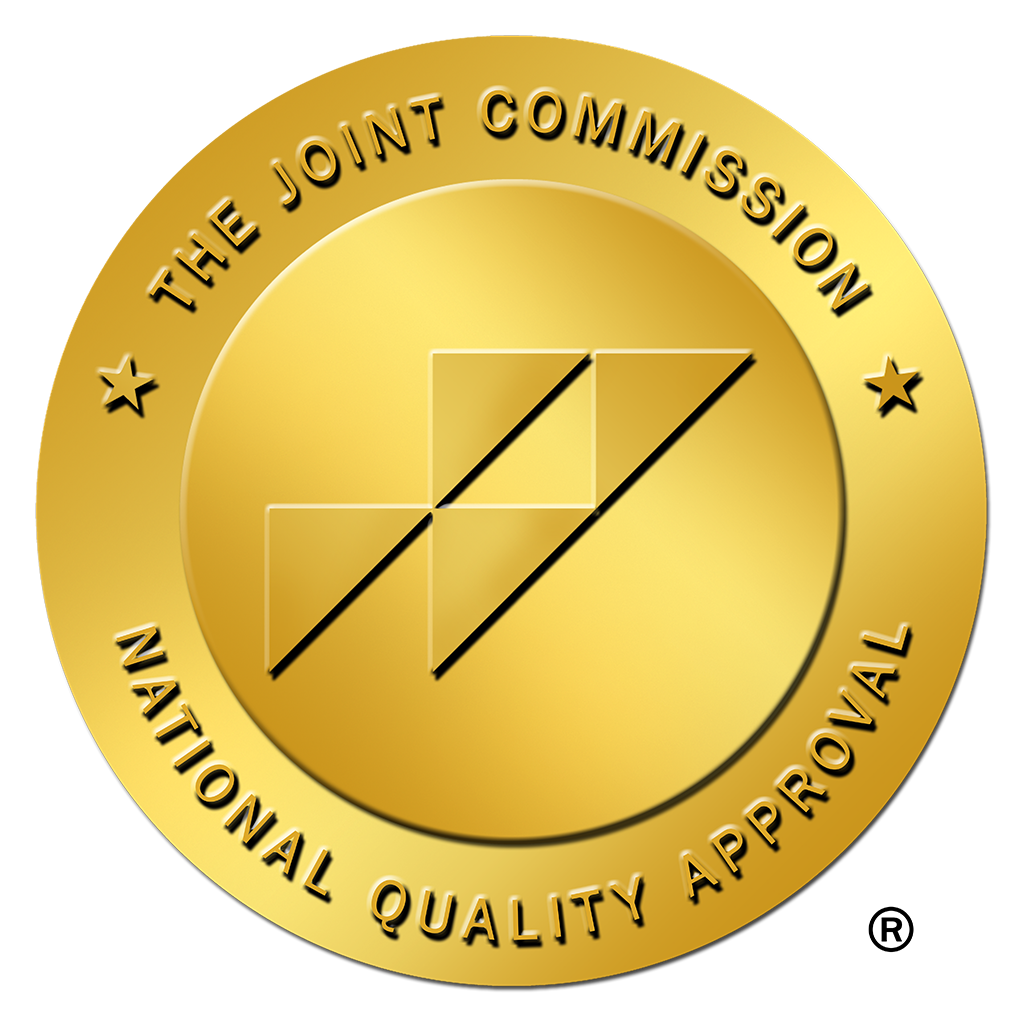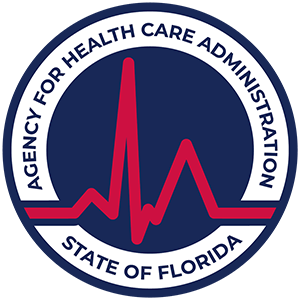The synthetic opioid fentanyl has become America’s deadliest drug, killing more than 70,000 people in 2021. This drug’s extreme potency makes it a lethal threat, especially since an amount smaller than a salt grain can cause a fatal overdose. The unprecedented health emergency affects people from every community, background, and income level, creating an urgent need for prevention and intervention strategies.
Fentanyl’s severe risks stem from several complex factors that fuel this epidemic. Current prevention approaches include wider naloxone availability and medication-assisted treatments. However, meaningful progress requires policy reforms and reduced addiction stigma. Both immediate harm reduction tactics and long-term solutions play crucial roles in curbing this escalating crisis.
The Rise of Fentanyl: Understanding the Crisis
America’s synthetic opioid crisis has reshaped the scene of drug-related emergencies. Fentanyl has become a main concern for public health officials and law enforcement. A deeper understanding of this crisis comes from looking at the drug’s unique properties, its devastating effect, and its complex distribution network.
What is fentanyl, and why is it so dangerous?
Fentanyl poses an unprecedented threat to public health. This synthetic opioid is 50 times stronger than heroin and 100 times more powerful than morphine. The lethal nature of this drug becomes evident when you consider its fatal dose – a mere 2 milligrams can kill someone. This amount equals just 10-15 grains of table salt.
The illegal market offers this drug in several dangerous forms:
- White, gray, or tan powder for injection, smoking, or snorting
- Counterfeit prescription pills mimicking legitimate medications
- Blotter papers and nasal sprays
- Mixed into other substances like heroin, cocaine, and methamphetamine
Statistics on fentanyl-related overdose deaths
Fentanyl-related deaths paint a tragic picture of our nation’s opioid crisis. Synthetic opioid overdoses have risen dramatically since 2012, with death rates quadrupling in recent years. Synthetic opioids, especially fentanyl, now take more than 150 American lives each day – a staggering 55,000 deaths per year.
How fentanyl enters the U.S. drug supply
Fentanyl supply chain patterns have changed substantially since 2014. Law enforcement’s first major bust yielded just 22 pounds. Recent data shows a staggering increase – authorities intercepted over 27,000 pounds between October 2022 and September 2023, enough pure fentanyl to create more than 6 billion lethal doses.
American streets receive fentanyl through a sophisticated international network. China continues to be the main source of pure fentanyl and precursor chemicals. Their shipments typically contain small quantities with high purity levels that often reach 90% concentration. Mexican transnational criminal organizations (TCOs) have expanded their role by running sophisticated laboratories and using industrial-scale equipment to produce and distribute the drug.
The deadly trade has seen India emerge as a new player that supplies both finished fentanyl powder and precursor chemicals. Criminal networks adapt their operations continuously to evade detection and exploit legitimate shipping channels, making this supply route diversification harder to combat.
Legal ports of entry serve as the main entry points for fentanyl into the United States. Border authorities report that over 90% of seizures occurring at official crossing points or interior vehicle checkpoints. Criminal organizations smuggle the drug through passenger vehicles with hidden compartments or mix it with legitimate cargo in tractor-trailers, creating detection challenges for border authorities.
Traffickers find fentanyl particularly appealing due to its economic advantages. The drug’s extreme potency allows smaller quantities to supply the same market as traditional opioids, which makes it more profitable and easier to hide during transport.
Factors Contributing to the Fentanyl Epidemic
Multiple connected factors have made the fentanyl epidemic worse. These factors create dangerous conditions of accessibility, potency, and deception in the illegal drug market. What started as a prescription drug crisis has reshaped into an unprecedented public health emergency.
Ease of production and trafficking
Fentanyl’s synthetic nature creates a radical alteration in drug production economics. Traditional plant-based drugs depend on growing seasons and weather conditions, while laboratories can manufacture fentanyl throughout the year. The Sinaloa and Jalisco cartels’ sophisticated production networks have partnered with Chinese chemical suppliers to obtain precursor materials.
These operations benefit from:
- Low production costs and minimal space requirements
- Year-round manufacturing capability
- Easy transportation due to concentrated potency
- Distribution networks through legal ports of entry
Counterfeit pills and contaminated drug supply
The proliferation of counterfeit prescription medications stands as the most alarming development. The DEA’s laboratory analysis revealed that six out of ten fentanyl-laced counterfeit pills now contain potentially lethal doses—a significant increase from previous years. Drug manufacturers design these pills to look similar to legitimate medications, such as:
| Legitimate Medication | Counterfeit Version Risks |
|---|---|
| OxyContin® | May contain lethal fentanyl dose |
| Xanax® | No quality control in production |
| Percocet® | Inconsistent drug distribution |
| Adderall® | Often mixed with methamphetamine |
Fentanyl contamination goes beyond pills and appears in other substances. Recent studies found fentanyl present in 12.5% of powder methamphetamine and 14.8% of powder cocaine samples. This creates additional risks for users who lack opioid tolerance.
Lack of awareness among users
Users remain dangerously unaware about fentanyl contamination in the drug supply, which makes this crisis worse. People who buy what they think are legitimate prescription medications through social media platforms or online stores don’t realize they’re risking their lives. Even experienced users face challenges in identifying contaminated substances. Fentanyl test strips offer some help but come with serious limitations:
- Cannot detect all synthetic opioids
- May miss hot spots in unevenly mixed substances
- Aren’t legal in all jurisdictions
- Provide false sense of security when negative
New synthetic opioids keep emerging while production methods become more sophisticated. Drug makers have found the quickest way to produce and distribute these substances. This creates a deadly cycle that claims lives from every demographic group because users don’t know enough about the risks.
The Impact of Fentanyl on Communities
The fentanyl crisis has altered the social, economic, and healthcare landscape of American communities. This devastating epidemic reaches well beyond those who use the drug and disrupts every aspect of community life.
Demographic trends in overdose deaths
Recent data shows alarming racial and ethnic differences in fentanyl-related deaths. Black individuals experienced an 87% surge in overdose deaths between 2018 and 2022. Hispanic individuals saw a 43% increase, while White individuals showed a small decline (-12%). These numbers point to a radical alteration in who the epidemic affects:
| Demographic Group | Change in Overdose Deaths (2018-2022) | Primary Contributing Factors |
|---|---|---|
| Black Americans | +87% | Contaminated stimulant supply |
| Hispanic Americans | +43% | Limited access to treatment |
| White Americans | -12% | Increased prevention resources |
Adults aged 35-44 face the greatest risk according to age-specific death rates, with 63.1 deaths per 100,000 population in 2022. The elderly population aged 65 and above showed the steepest rise, with a 10% increase in overdose deaths from 2021 to 2022.
Strain on healthcare and emergency services
Fentanyl-related emergencies have created an overwhelming burden on healthcare systems across the nation. Healthcare providers handled about 290,000 hospitalizations and emergency department visits due to opioid poisoning last year. Public resources shoulder significant financial costs:
- Medicare and Medicaid cover most treatment expenses
- Rural healthcare facilities lack essential resources
- Emergency response systems experience high call volumes
- Treatment facilities cannot meet patient demand
First responders face additional challenges. They must stock larger quantities of naloxone and often need multiple doses to save a single fentanyl overdose victim. These requirements have driven up operational costs and created serious safety risks for emergency personnel.
Social and economic consequences
The fentanyl crisis cost the nation a staggering $684.6 billion in 2017, which equals 3.5% of the nation’s GDP. Daily costs run about $1.9 billion, and this disrupts everything from workforce participation to healthcare spending.
Studies show that the opioid epidemic accounts for 43% of the decline in men’s labor force participation between 1999 and 2015, while women’s participation dropped by 25%. The crisis hits hardest in industries where injuries happen often. Construction and extraction workers face the highest risk, with construction workers making up over 24% of all overdose deaths among working populations in some states.
Businesses now struggle with rising healthcare costs and lower productivity. Employees who have substance use disorders need almost 50% more unplanned time off than their coworkers. Their turnover rates run 44% higher than average. These problems get worse in industries where workers can’t get paid sick leave and face high injury risks.
Communities also deal with several side effects:
- Child welfare systems under pressure
- Law enforcement and emergency services need more funding
- Property values drop in hard-hit areas
- Neighborhood bonds break down where the crisis hits hardest
Healthcare insurance markets feel the shock waves too. Private insurers spent $2.6 billion on opioid-related costs in 2016—four times more than in 2009. This massive jump in healthcare costs leads to higher premiums, and many communities now have fewer coverage options.
Current Prevention and Treatment Strategies
Communities nationwide face devastating effects of fentanyl. Detailed prevention and treatment strategies have become crucial to address this crisis. Healthcare providers, public health officials, and community organizations now implement multiple approaches to save lives and support recovery.
Naloxone distribution and training
Naloxone serves as the life-blood to prevent fentanyl-related deaths. Distribution programs have expanded by a lot nationwide. Syringe services programs distributed over 150,000 naloxone kits between 1996 and 2014. These kits helped save tens of thousands of lives through successful overdose reversals. Modern distribution methods include:
- Public access “NaloxBoxes” in high-risk areas
- Pharmacy-based distribution programs
- Mail-order naloxone services
- Emergency services leave-behind programs
- Community health center distribution
People can learn to use naloxone in just five minutes, which makes widespread education possible. North Carolina’s success shows the program’s powerful effect – the state reported 4,152 successful community overdose reversals in 2021 alone.
Medication-assisted treatment options
FDA-approved medications combined with evidence-based treatment have shown amazing results in treating opioid use disorder. Several medication choices are available today:
| Medication | How It Works | Benefits |
|---|---|---|
| Methadone | Occupies opioid receptors | Eliminates withdrawal and cravings |
| Buprenorphine | Partial opioid receptor activation | Reduces withdrawal symptoms |
| Naltrexone | Blocks opioid effects | Prevents relapse |
These medications work best when paired with counseling and psychosocial support to create a complete treatment plan. Studies show patients can safely use these treatments long-term. Many patients maintain their recovery successfully for months, years, and sometimes throughout their lives.
Public education and awareness campaigns
The fentanyl crisis has transformed how public education efforts tackle these unique challenges. The Campus Opioid Act now requires public colleges to give out naloxone and teach students about opioid overdose prevention during orientation. States have launched their own programs to address this crisis.
California’s Master Plan for Tackling the Fentanyl and Opioid Crisis offers a complete framework that includes:
- Youth opioid education programs
- Mandatory fentanyl education in health classes
- Online resource development through opioids.ca.gov
- Community-based awareness campaigns
The state’s Naloxone Distribution Project (NDP) has saved an estimated 285,000 lives by distributing more than 4 million kits. These results show why education and practical harm reduction strategies must work together.
Public health officials stress that education needs to reach beyond classrooms into homes and communities. One-on-one talks about prescription drug abuse risks work well, especially when you have practical resources and support services available.
The Drug Enforcement Administration coordinates educational efforts nationwide through specific awareness days, including National Fentanyl Prevention and Awareness Day. These events feature educational films, panel discussions, and prevention resources.
Healthcare providers now include addiction education in primary care settings because they realize drug enforcement alone can’t solve this crisis. This medical approach treats substance use disorder as a chronic disease, as with diabetes or heart disease, that needs ongoing care and support.
New programs have expanded to include:
- Virtual training programs for healthcare providers
- A social-first awareness strategy
- School-based prevention programs
- Community stakeholder education sessions
- Peer support specialist training
These strategies show our growing understanding that the fentanyl crisis needs a coordinated response that combines immediate harm reduction with long-term prevention and treatment options.
Challenges in Addressing the Fentanyl Crisis
Our most important efforts to curb the fentanyl epidemic face substantial obstacles that slow down our progress in this public health emergency. Healthcare access problems, systemic barriers and social attitudes create complex challenges that make response strategies harder to implement effectively.
Limitations of current drug policies
Drug policies today face major challenges as they try to tackle the fentanyl crisis. The current system puts too much emphasis on enforcement rather than treatment. This creates a gap between what public health needs and how policies work. Recent data shows that 78% of fentanyl trafficking sentences affect people of color, which reveals troubling racial disparities in how laws are enforced.
Drug policies fall short in several ways:
- They only schedule fentanyl analogs temporarily instead of finding lasting solutions
- They don’t focus enough on prevention and reducing harm
- Community-based treatment programs lack proper funding
- New treatment research doesn’t receive adequate support
The problems with these policies became even more obvious during the COVID-19 pandemic. The public health emergency led to significant increases in substance abuse while mental health got worse. Rural areas suffered the most as they struggled with fewer resources and limited economic options that made healthcare harder to access.
Stigma surrounding addiction and treatment
Stigma creates the biggest roadblock in tackling the fentanyl crisis. Studies show that people worldwide look down on substance use disorders more than almost any other health condition. This creates major hurdles when patients need treatment.
| Type of Stigma | Impact on Treatment | Consequences |
|---|---|---|
| Social Stigma | People avoid seeking help | Patients feel isolated |
| Structural Stigma | Hard to get healthcare | Poor treatment quality |
| Self-Stigma | People wait too long to get help | Higher death risk |
Many healthcare providers show negative attitudes toward patients with substance use disorders. This leads to poor care quality and makes patients less likely to stick with their treatment. News media makes things worse by treating the crisis like a crime story instead of a health issue that doctors can treat.
Barriers to accessing care and support services
People seeking treatment face many practical and systemic roadblocks. Rural communities struggle the most because their provider-to-patient ratios are significantly lower than urban areas. Distance and isolation make these problems even worse.
Treatment barriers show up in several ways:
- Economic Obstacles
- Poor insurance coverage
- Expensive out-of-pocket costs
- Not enough money for long-term care
- Systemic Challenges
- Treatment programs with long waiting lists
- Complex rules to get admitted
- Disconnected care systems
- Poor coordination between services
The healthcare system’s design creates extra obstacles. Many facilities have strict rules that clash with work and family needs. Insurance problems don’t help either – providers often need lots of paperwork or pre-approvals that hold up urgent care.
Keeping treatment going becomes especially hard in the criminal justice system. Wrong ideas about medication-assisted treatment lead to poorly run programs. When criminal stigma meets substance use prejudice, patients lose confidence and don’t stay involved with treatment.
Studies show that high-threshold treatment program practices and government policies often make things worse by:
- Adding to life’s pressures
- Using up scarce resources
- Making it harder to start treatment
- Adding paperwork for providers
Healthcare workers face their own set of problems with inadequate professional education and training about proven treatment methods. This lack of knowledge affects everyone who works with people who have substance use disorders, from EMTs to family doctors.
These complex problems need detailed solutions that tackle both immediate care barriers and why they happen. The fentanyl crisis needs new ideas that work better than current approaches and make treatment more available and effective.
Fentanyl Treatment at Milton Recovery Centers
America faces one of its worst public health emergencies – the fentanyl crisis. This crisis takes tens of thousands of lives each year and puts enormous pressure on healthcare systems. Communities of all backgrounds feel its devastating effects. The numbers tell a shocking story: synthetic opioids kill more than 150 people daily, and the economic toll has reached $684 billion per year. These alarming statistics show we just need quick action based on solid evidence and system-wide changes.
We must take action on several fronts to curb this crisis. People should have better access to naloxone, stronger prevention programs, and easier paths to treatment. Professional addiction care programs, like those at Milton Recovery Centers, are a great way to get help through proven methods that work for both immediate and long-term recovery. Recent medical breakthroughs, along with better policies and less stigma around addiction, show promise if you have been affected by this devastating epidemic.








8 thoughts on “Fentanyl Overdoses: Expert Insights on a Growing Crisis”
Fentanyl is such a scary drug. It seems like it’s everywhere and it can kill someone the first time they try it. Truly horrifying.
We actually just had a presentation about the dangers of fentanyl (along with a few other drugs) since they’ve been running rampant around the Houston area. This was at a Boy Scout leader event to learn how to protect the youth in our program.
This is such a scary epidemic spreading across the world. I really do believe that adequate education can really help with the prevention of overdoses.
Your posts are fantastic and knowledgeable! Thanks for the review of fentanyl.
Great post and such an important topic to discuss. Fentanyl overdose has become a major problem in many cities and people need to be aware that this is a growing crisis indeed for this generation. Education is the key!
This isn’t something I know particularly much about. It’s awful that it is so strong and such a small amount can kill. Not something I’d ever consider trying.
I’ve heard of this Fentanyl before and its always related to death news and overdoses. Good to know more about this and why people are drawn to this and how we can help them overcome it or just even guide them on the right path.
Whew! 2 milligrams can kill an actual human being? How is this drug freely on the market today?